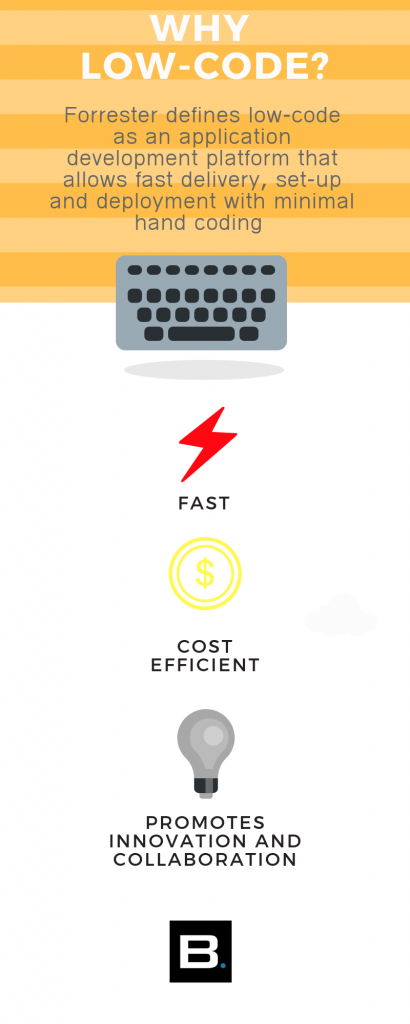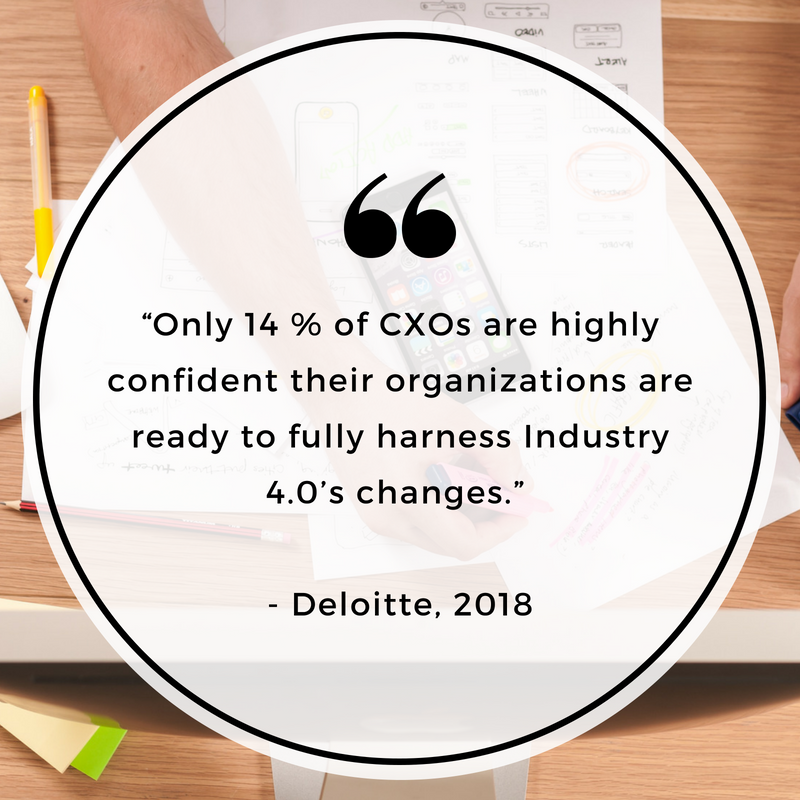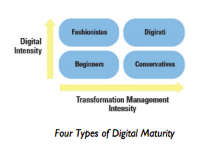
If you’re here, you’ve probably heard about “low-code” before. If you haven’t, low-code is a software development approach that abstracts and automates application development steps to reduce complexity and accelerate development speed.
As the pressure on IT to deliver more and faster increases, many organizations are turning to low-code development to surpass the barriers imposed by the developer shortage and traditional development tools (you can read more about the pros of low-code in Top 5 Benefits of Low-Code). But, what can you really build with low-code? And what are its limits?
Low-Code Use Cases
In its Magic Quadrant for Enterprise Low-Code Application Platforms (LCAP), Gartner identifies LCAP as a technology that addresses essentially five use cases:
- Support a citizen development strategy
- Deliver business unit IT apps
- Build enterprise IT business process apps
- Develop fusion team-developed composite applications
- Build SaaS and ISV applications.
What our experience has taught us is that pure low-code platforms might be okay for building a form on top of a database or putting together a simple web or mobile app, but for more complex use cases, pure low-code tools fall short. For that reason, and based on our customers’ feedback over the last two decades, we’ve been evolving our platform to ensure it meets enterprise requirements and needs.
That said, next, I’ll review the use cases proposed by Gartner and share our vision on what you can deliver with low-code and when you should consider a more complete, modern application development platform like OutSystems.
Can Low-Code Support a Citizen Development Strategy?
Many low-code tools have no-code features embedded to allow citizen developers (non-professional developers with little to no app dev experience) to build simple, B2E applications almost exclusively using prebuilt templates, connectors, APIs, and logic.
So, does low-code support a citizen development strategy? Yes, it does. However, keep in mind that in its pure, drag-and-drop format, citizen development exclusively sponsored by no-code capabilities may lead to a scenario of shadow IT, where you end up with separate business applications that IT is not aware of and has no governance over them. Another problem is that you can end up with a proliferation of applications, many of which might be duplicates, that can slow performance or drive up cloud costs. Without this control, a violation of the organization’s requirements for control, documentation, security, and reliability is a possibility. You can also end up with app sprawl that is difficult, if not impossible, to rein in.
How Is a Modern Application Platform Different?
A modern application development platform also provides the visual, model-based development features associated with low-code. The difference is the apps you build with a modern application platform like OutSystems are not the simple ones churned out by someone who wants to put a form on top of a spreadsheet or create a vacation approval app. Instead, with OutSystems, you deliver powerful enterprise apps and app portfolios that run your business and what make you unique.
With OutSystems governance and impact analysis capabilities, for example, IT knows what every application developed with the platform does. Plus, if IT wants to work on top of the apps created by business users, OutSystems provides the necessary tools to unite IT and business to expand the project.
Can Low-Code Deliver Web and Mobile Business Unit Apps?
In the Speed of Change report, the majority of IT leaders inquired said it took their development teams 3-6 months to deliver an application. That’s a lifetime, and even more so in the COVID-19 era. The biggest value proposition of low-code is the development speed it provides. With low-code, development teams can build new web and mobile apps that involve data, business logic, and external services, such as SaaS services, in less than three months.
The problem comes when you need to deliver a second or third version of that app. Pure low-code tools help you build a prototype or version 1 of an app really fast, but when you need to make a change to meet customer feedback, or integrate to another system that has just popped up, they don’t offer an easy path. Think of it like running a marathon: if you start your run sprinting, you won’t have enough energy to finish the race. The same goes with pure low-code tools: to give you the speed to deliver apps super fast, they tend to sacrifice app quality.
How Is a Modern Application Platform Different?
A modern app development platform goes beyond low-code to give you the capabilities to build apps not only fast, but also right and for the future. Besides a low-code development approach and AI-assisted development, the OutSystems platform also provides services and security checks to ensure scalability, governance, protection from threats, and compliance.
In addition to that, its AI capabilities also find and solve issues early, eliminating design errors and duplication of effort and identifying anything that needs to be corrected or optimized. Unlike low-code tools, OutSystems was designed to help manage change and future-proof your apps. OutSystems platform services, AI, and visual tools enable the continuous introduction of features and capabilities. This way, developers can evolve apps every bit as quickly as the business changes and new technologies are introduced.
Can Low-Code Build Enterprise IT Business Process Applications?
Low-code gives organizations the capabilities needed to access, use, and share back-end data, logic, and processes, and thus the ability to automate and change business processes, workflows, and case management applications. In fact, many low-code vendors featured in LCAP Magic Quadrant were originally traditional BPM software vendors that reinvented themselves.
So, with low-code you can indeed build business process applications but, for some platforms, if you need to integrate those apps to other systems on-premise, you’ll need to do a lot of hand-coding. Plus, pure low-code tools fail at building more complex, enterprise-grade apps because you don’t have access to a full architecture view nor an easy way to debug them.
How Is a Modern Application Platform Different?
OutSystems allows you to design and manage your business processes and integrate them into your applications using its Business Process Technology methodology. In addition to that, OutSystems provides Architecture Dashboard and TrueChange to check and identify any architecture errors.
The Architecture Dashboard allows developers and architects to visualize complex cross-portfolio architectures and identify and fix problems while following best practices and avoiding common pitfalls. The TrueChange engine, on the other hand, combines the power of automation, AI and analytics checks for architecture errors and dependencies to provide team and architecture governance and monitor the performance in real-time.
Can Low-Code Develop Fusion Team-Developed Composite Applications?
Fusion teams are multidisciplinary teams that bring together business and IT to collaborate on cross-functional projects. Visual tools like low-code play a crucial role in promoting this collaboration, as it allows business people with no coding experience to tap into their subject matter expertise and create the application workflows they need.
But to maximize the power of fusion teams, the technology used should not only expand the capabilities of business people but also ensure that the apps created by non-developers follow the standard architectures and frameworks so that experienced developers can adjust and extend them without any re-architecting. Pure low-code tools, because they focus solely on simplifying the complexity of app development, lack this key part of the equation.
How Is a Modern Application Platform Different?
Modern application platforms like OutSystems give your fusion teams the simplicity of low-code development but integrated in a full-stack application development platform. This way, OutSystems gives developers the ability to extend applications that were started by non-developers with the expressiveness and flexibility of traditional coding.
To learn more about the capabilities a platform should have to make the most out of your fusion team, take a look at 4 Capabilities App Dev Platforms Need for Whole-Team Cross-Functional Collaboration.
–END-
In light of the research results, as BAYPM, we would love to help you with your Digital Transformation journey, give us a shout and we’ll be sure to assist you as best as we can. Currently, we are working on a project to digitize manual processes within different locations. The client opted for an incremental implementation approach based on geographical locations and the needs of their different factories.








